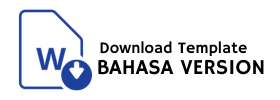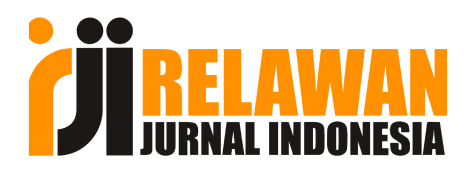Klasifikasi Citra Pada Tingkat Kematangan Buah Pisang Menggunakan Algoritma Deep Learning
DOI:
https://doi.org/10.31933/jemsi.v5i3.1786Keywords:
Image Classification, Deep Learning Algorithm, Banana RipenessAbstract
This research aims to classify images to predict banana ripeness based on skin color features using a deep learning algorithm method. The research method used is a quantitative approach, where the population in this study is to collect data by downloading datasets from Mendeley & Kaggle, the dataset taken is 200 images of bananas, namely 100 images of ripe bananas & and 100 images of unripe bananas. The sample selection technique uses classified images through the pre-processing stage, the tomato fruit image will be divided into 2 methods for testing the Self-Organizing Maps Algorithm model, namely 80% training data and 20% testing data
References
Kokyay, S., Kilinc, E., Uysal, F., Kurt, H., Celik, E., & Dugenci, M. (2020). A Prediction Model of Artificial Neural Networks in Development of Thermoelectric Materials with Innovative Approaches. In Engineering Science and Technology, an International Journal.
Koswara, S. (2019). Peningkatan Nilai Tambah Usaha Olahan Keripik Pisang di Desa Tenajar, Kabupaten Indramayu, Jawa Barat. Agrokreatif: Jurnal Ilmiah Pengabdian kepada Masyarakat, 5(3), 251-257.
Melani, A., Atikah, A., Arjeni, R., & Robiah, R. (2022). Pengaruh Volume Pelarut NaOH Dan Temperatur Pemasakan Pulp Dari Pelepah Pisang Klutuk. Jurnal Distilasi, 7(1), 18-27.
Moshayedi, A. J., Roy, A. S., Kolahdooz, A., & Shuxin, Y. (2022). Deep learning application pros and cons over algorithm deep learning application pros and cons over algorithm. EAI Endorsed Transactions on AI and Robotics, 1(1).
Yanti, N., Cynthia, E. P., Vitriani, Y., & Azmi, G. (2019). Prediksi Radiasi Matahari DenganPenerapan Metode Elman Recurrent Neural Network. Jurnal InfortechVol2No1.
Downloads
Published
How to Cite
Issue
Section
License
Copyright (c) 2024 Alfath Arjun

This work is licensed under a Creative Commons Attribution 4.0 International License.
Hak cipta :
Penulis yang mempublikasikan manuskripnya di jurnal ini menyetujui ketentuan berikut:
- Hak cipta pada setiap artikel adalah milik penulis.
- Penulis mengakui bahwa Jurnal Ekonomi Manajemen Sistem Informasi (JEMSI) berhak menjadi yang pertama menerbitkan dengan lisensi Creative Commons Attribution 4.0 International (Attribution 4.0 International CC BY 4.0) .
- Penulis dapat mengirimkan artikel secara terpisah, mengatur distribusi non-eksklusif manuskrip yang telah diterbitkan dalam jurnal ini ke versi lain (misalnya, dikirim ke repositori institusi penulis, publikasi ke dalam buku, dll.), dengan mengakui bahwa manuskrip telah diterbitkan pertama kali di Jurnal Ekonomi Manajemen Sistem Informasi (JEMSI).











































































